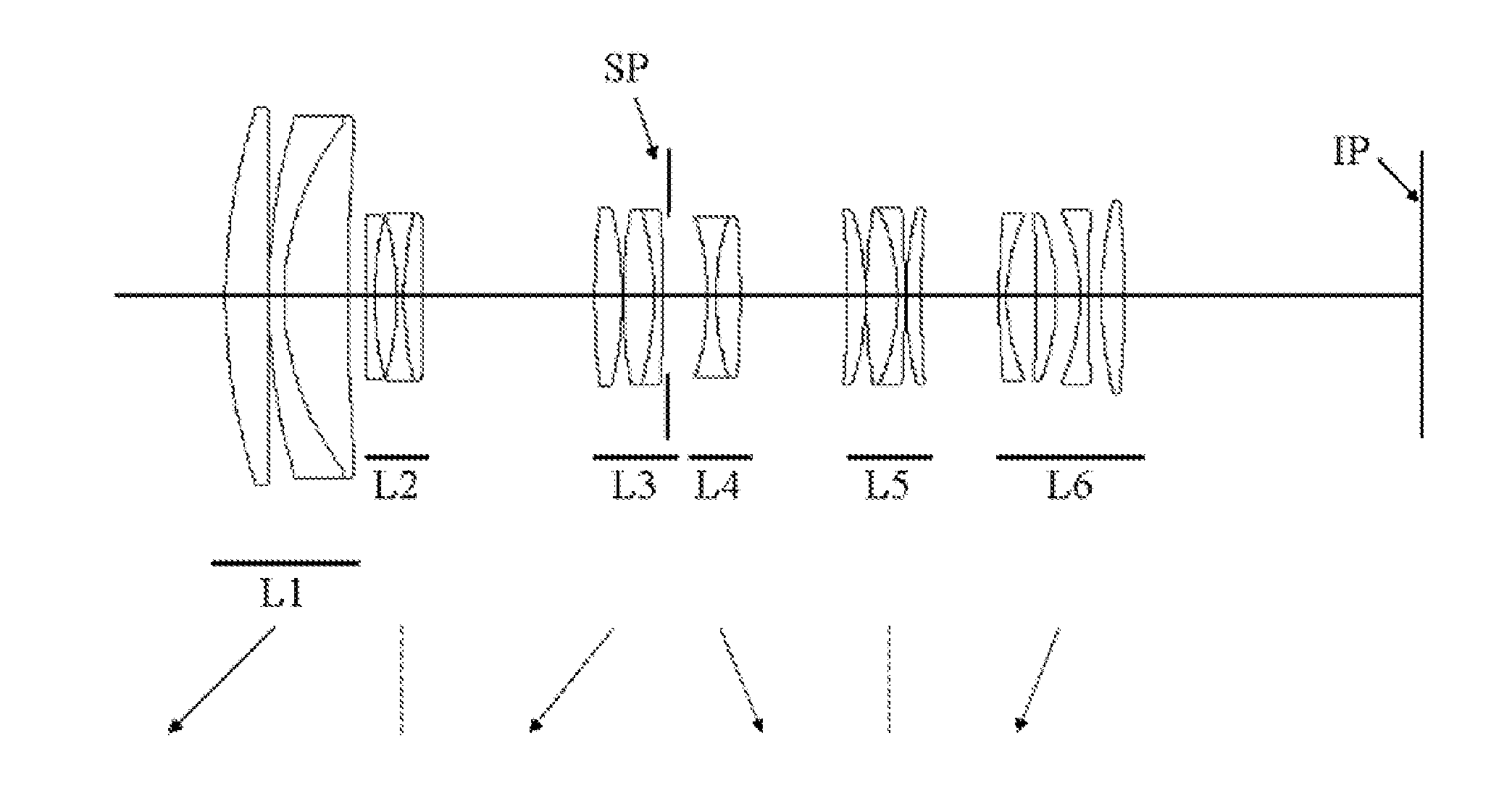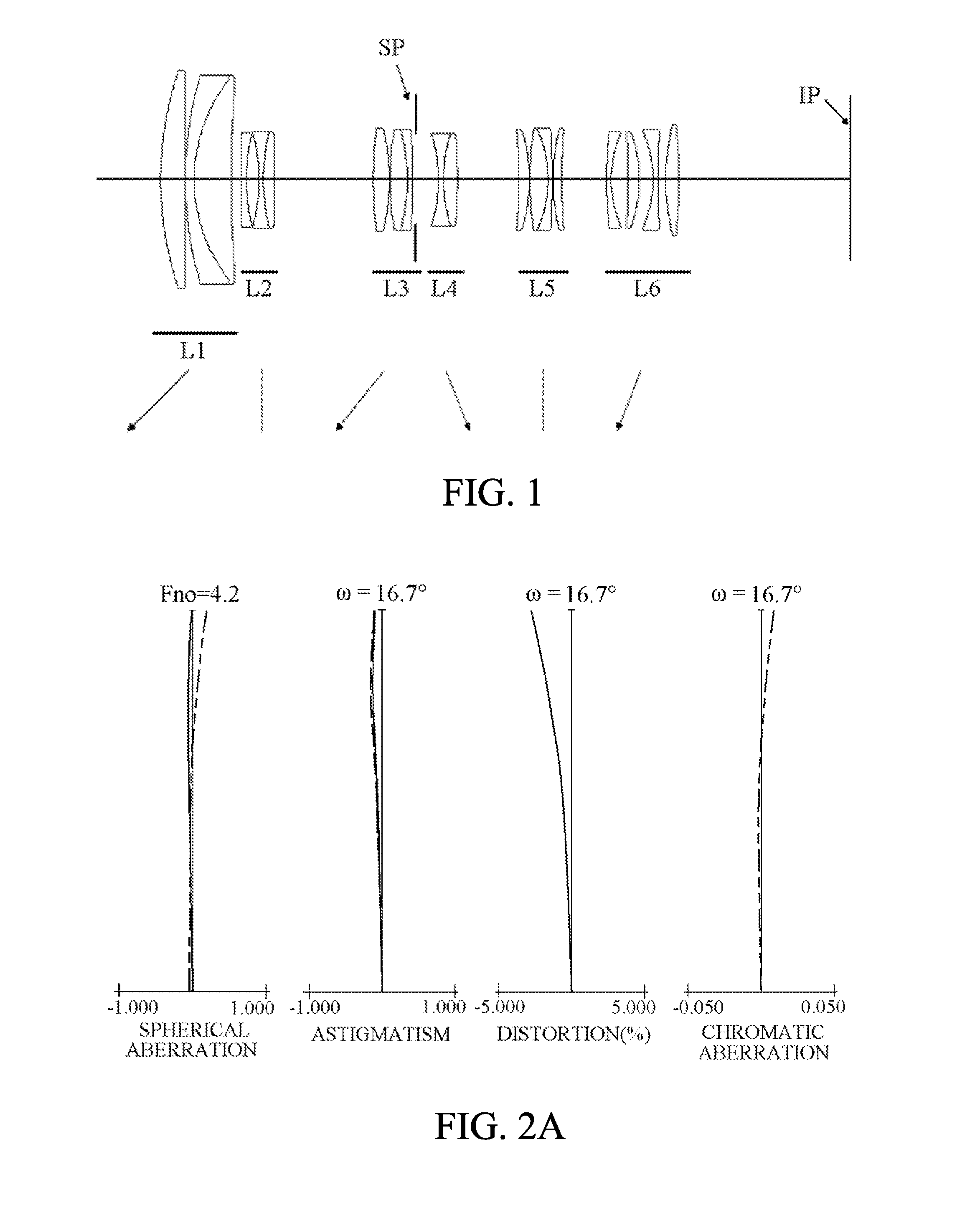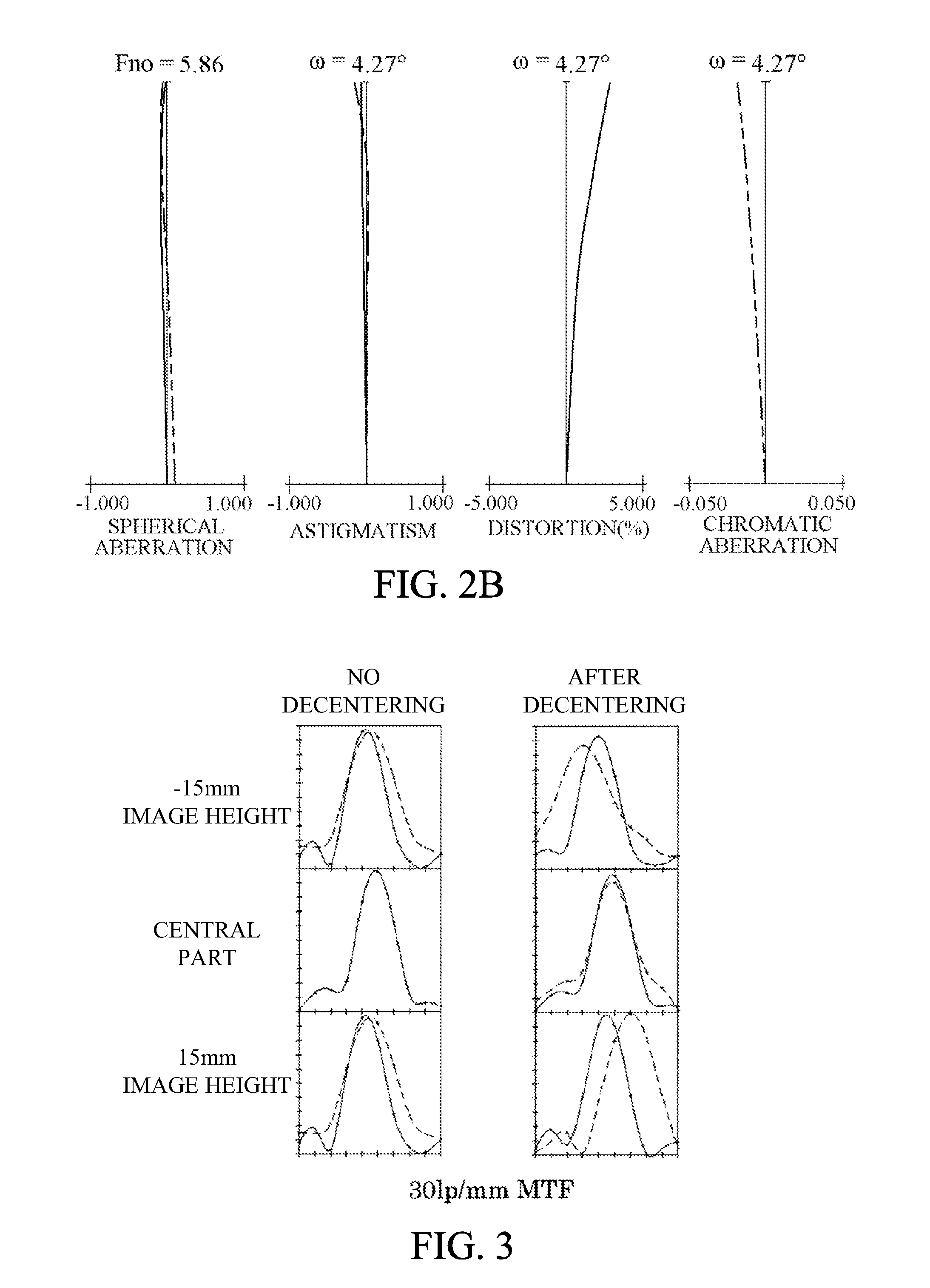Zoom lens and optical apparatus
a technology of optical apparatus and zoom lens, which is applied in the field of zoom lens, can solve problems such as optical performance deterioration, and achieve the effect of low optical performance deterioration sensitivity
- Summary
- Abstract
- Description
- Claims
- Application Information
AI Technical Summary
Benefits of technology
Problems solved by technology
Method used
Image
Examples
embodiment 1
[0098]The zoom lens of Embodiment 1 (Numerical Example 1) shown in FIG. 1 includes, in order from the object side, the first lens unit L1 having a positive optical power, the second lens unit L2 having a negative optical power, a third lens unit L3 having a positive optical power, a fourth lens unit L4 having a negative optical power, a fifth lens unit L5 having a positive optical power and a sixth lens unit L6 having a negative optical power. The half field angle at the telephoto end is 4.2 degrees.
[0099]The first lens unit L1 is constituted by, in order from the object side, the positive lens, and a cemented lens formed by cementing the negative meniscus lens having the object side convex surface to the positive meniscus lens having the image side concave surface.
[0100]The zoom lens of this embodiment satisfies the condition (1) for the image side concave surface of the positive meniscus lens in the first lens unit L1. The satisfaction of the condition (1) brings the ray direction...
embodiment 2
[0107]The zoom lens of Embodiment 2 (Numerical Example 2) shown in FIG. 4 includes, in order from the object side, the first lens unit L1 having a positive optical power, the second lens unit L2 having a negative optical power, a third lens unit L3 having a positive optical power, a fourth lens unit L4 having a negative optical power, a fifth lens unit L5 having a positive optical power and a sixth lens unit L6 having a negative optical power. The half field angle at the telephoto end is 3.2 degrees.
[0108]The zoom lens of this embodiment satisfies the conditions (1)-(3) and the conditions (6)-(9). The second lens unit L2 having the negative optical power is unmoved during the zooming.
embodiment 3
[0109]The zoom lens of Embodiment 3 (Numerical Example 3) shown in FIG. 7 includes, in order from the object side, the first lens unit L1 having a positive optical power, the second lens unit L2 having a negative optical power, a third lens unit L3 having a negative optical power, a fourth lens unit L4 having a positive optical power and a fifth lens unit L5 having a negative optical power. The half field angle at the telephoto end is 4.2 degrees.
[0110]The zoom lens of this embodiment satisfies the conditions (1)-(3) and the conditions (6)-(9). The second lens unit L2 having the negative optical power is unmoved during the zooming.
PUM
 Login to View More
Login to View More Abstract
Description
Claims
Application Information
 Login to View More
Login to View More - R&D
- Intellectual Property
- Life Sciences
- Materials
- Tech Scout
- Unparalleled Data Quality
- Higher Quality Content
- 60% Fewer Hallucinations
Browse by: Latest US Patents, China's latest patents, Technical Efficacy Thesaurus, Application Domain, Technology Topic, Popular Technical Reports.
© 2025 PatSnap. All rights reserved.Legal|Privacy policy|Modern Slavery Act Transparency Statement|Sitemap|About US| Contact US: help@patsnap.com



